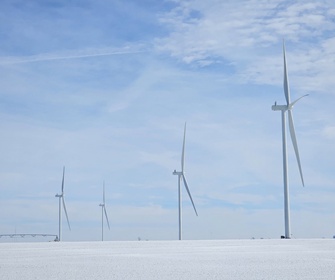The amount of new power generation and energy storage in the transmission interconnection queues across the U.S. continues to rise dramatically, with over 2,000GW of total generation and storage capacity now seeking connection to the grid, according to new research by Lawrence Berkeley National Laboratory (Berkeley Lab).
The queues indicate particularly strong interest in solar, battery storage, and wind energy, which account for 95% of all proposed capacity. In fact, the combined solar and wind capacity now actively seeking grid interconnection (~1,250 GW) approximately equals the installed capacity of the entire U.S. power plant fleet.
But this growing backlog has become a major bottleneck for project development: projects are taking longer and longer to complete the interconnection study process and come online, and most of these interconnection requests are ultimately canceled and withdrawn. Entering an interconnection queue is only one of many steps in the development process; projects must also have agreements with landowners and communities, power purchasers, equipment suppliers, and financiers, and may face transmission upgrade requirements. Data from these queues nonetheless provide a general indicator for mid-term trends in developer interest.
Berkeley Lab compiled and analyzed data from the seven organized electricity markets in the US and additional 35 utilities outside of those regions, which collectively represent over 85% of all U.S. electricity load.
But this growing backlog has become a major bottleneck for project development: projects are taking longer and longer to complete the interconnection study process and come online, and most of these interconnection requests are ultimately canceled and withdrawn. Entering an interconnection queue is only one of many steps in the development process; projects must also have agreements with landowners and communities, power purchasers, equipment suppliers, and financiers, and may face transmission upgrade requirements. Data from these queues nonetheless provide a general indicator for mid-term trends in developer interest.
Berkeley Lab compiled and analyzed data from the seven organized electricity markets in the US and additional 35 utilities outside of those regions, which collectively represent over 85% of all U.S. electricity load.
The amount of solar, wind, and storage in the queues today exceeds the amount needed to get to 90% of U.S. electricity from zero-carbon resources by 2035. The total capacity in the queue at the end of 2022, over 2 Terawatts (TW), is greater than current U.S. generating capacity of 1.25 TW, and more than six times larger than the queue in 2014. The passage of the Inflation Reduction Act – which increased incentives for renewable energy – is likely to drive even further growth in interconnection requests in coming years.
Solar (947 GW) accounts for the largest share of generation capacity in the queues, but substantial wind (300 GW) capacity has also applied for interconnection. The amount of offshore wind capacity in the queues (113 GW) represents more than three times the Biden Administration’s goal of 30 GW installed by 2030. Developer interest in electricity storage has exploded in recent years, with capacity in the queues reaching an estimated 670 GW as of the end of 2022.








